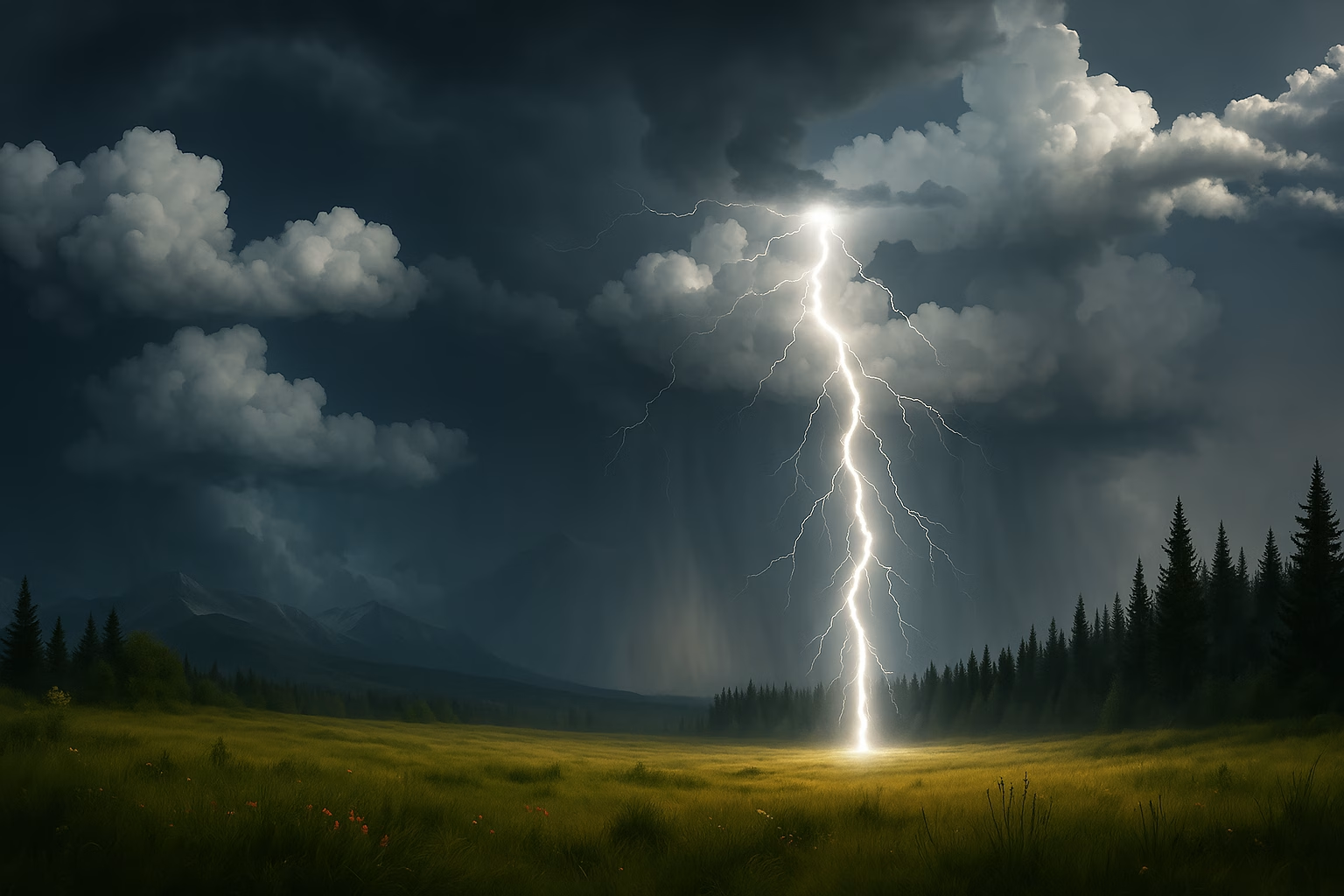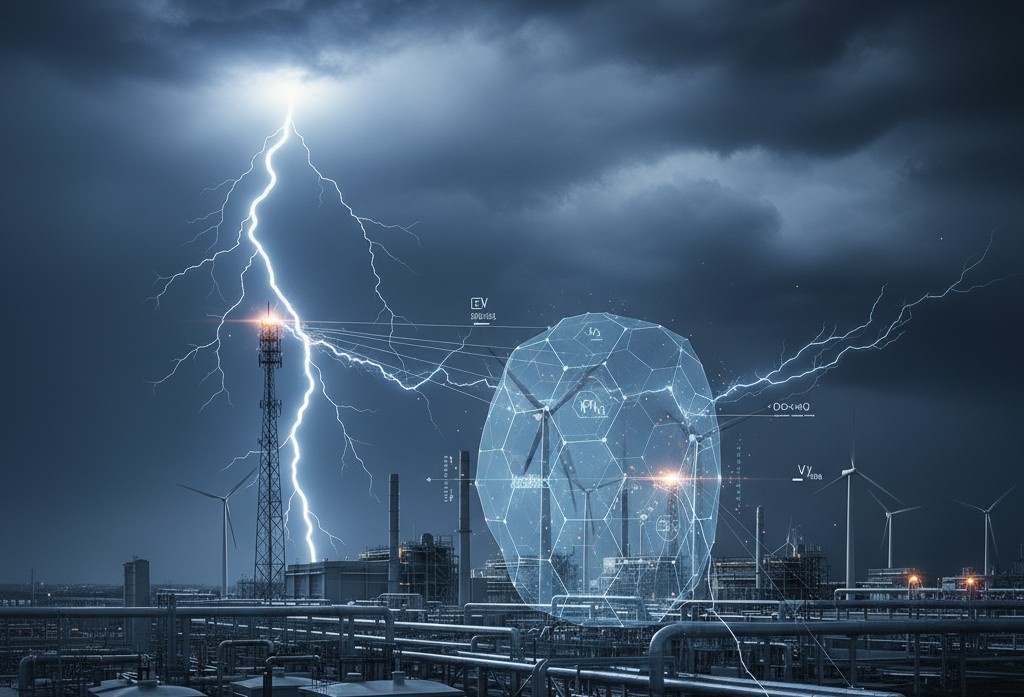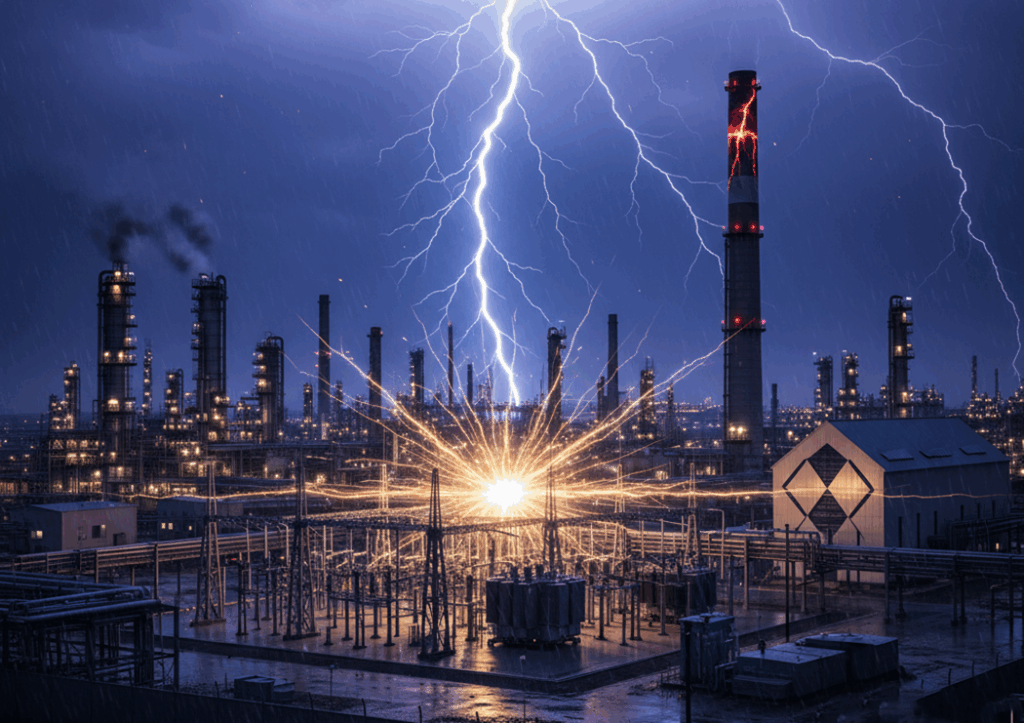Revisiting the Fundamentals of Lightning
Lightning phenomenon is a natural electrostatic discharge that occurs between two electrically charged regions in the atmosphere. These lightning discharges fall into two primary categories:
- Intra-cloud (IC) and cloud-to-cloud (CC) lightning – accounting for approximately 75% of all lightning events.
- Cloud-to-ground (CG) lightning – representing the remaining 25%, which poses a significant threat to people and infrastructure.
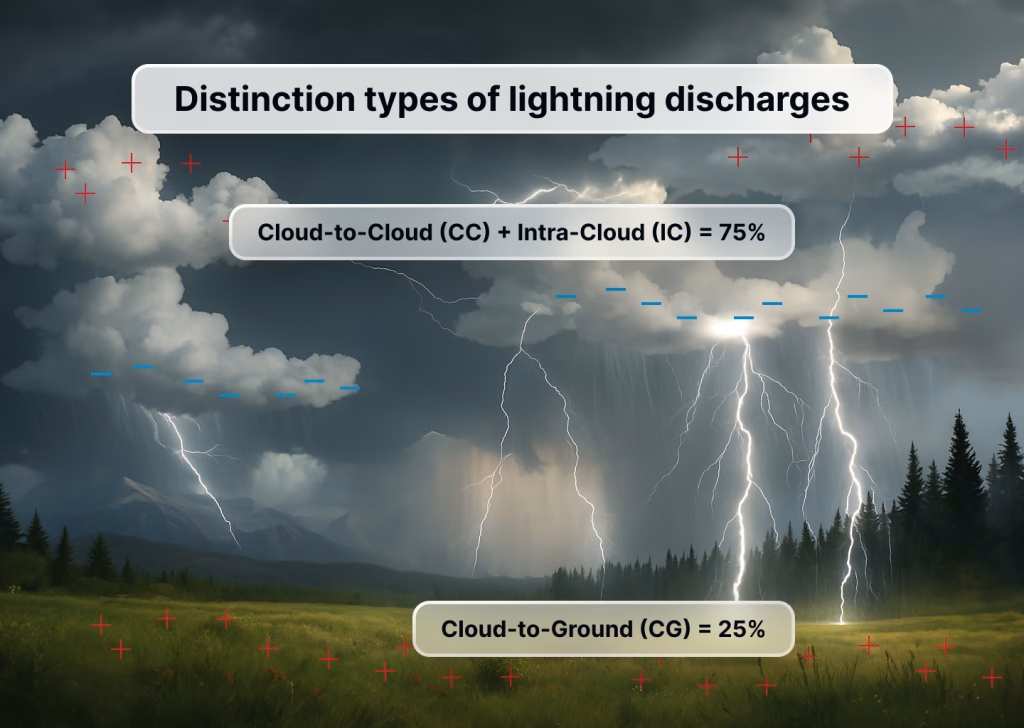
Types and Characteristics of Cloud-to-Ground Lightning
Focusing on cloud-to-ground lightning, different types of lightning discharges occur with varying directions and polarities. In scientific literature and lightning protection studies, the most common reference is downward negative lightning, as it constitutes around 90% of CG events. This simplification is practical because upward flashes generally occur on structures taller than 60 meters and are often of lower intensity, comparable to subsequent strokes in a flash.
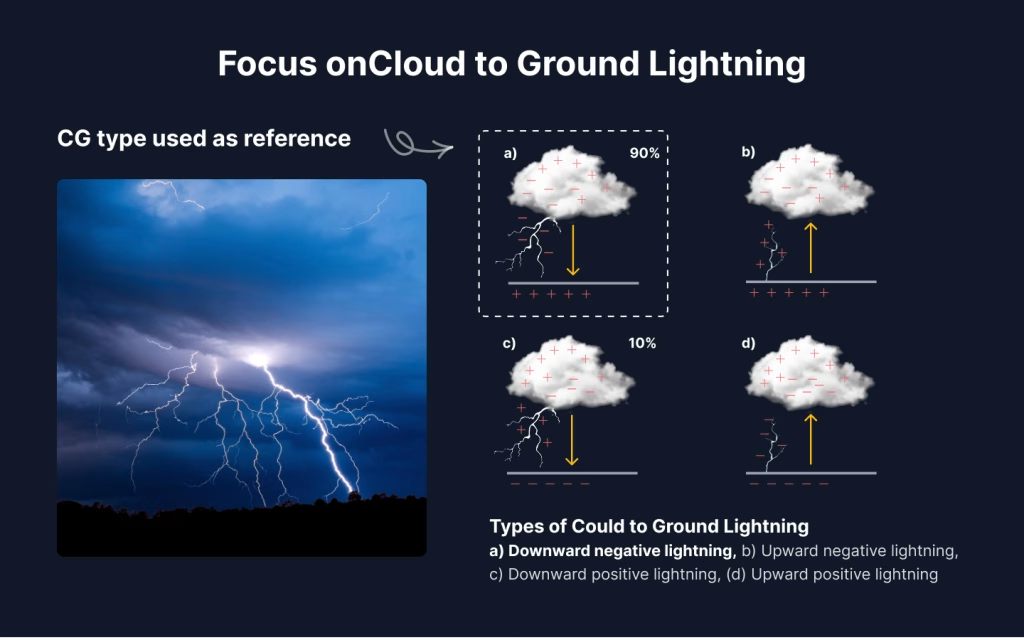
Differentiating Flashes and Strokes
A flash refers to the entire lightning event, which can consist of multiple strokes. A stroke is a single discharge within a flash. Typical downward negative flashes contain 2 to 5 strokes, with the first stroke generally exhibiting the highest peak current. However, this is not always the case.
Subsequent strokes occur at intervals of approximately 60 milliseconds. Conversely, positive flashestypically involve a single stroke. One critical concept to understand is the return stroke, which is the visible propagation of the flash upward after the downward leader makes contact with the ground. This upward motion is what we perceive as lightning. The peak current of the return stroke is a crucial parameter, as it significantly influences the damage potential to infrastructure.
A Flash is not a Stroke!
• Negative flash: 2 to 5 strokes
• Most positive flashes: 1 stroke
• Interval strokes: 60ms
• We refer to return strokes as the visible flash propagating upwards

Selecting the Best Lightning Observation Techniques
To obtain reliable lightning flash density data, various observation methods are ranked in order of accuracy, from best to worst:
- Ground-Based Lightning Location Systems (LLS) – The most accurate and widely recognized method for precise lightning detection and analysis.
- Lightning Flash Counters – Provide valuable localized data, though with less precision compared to LLS.
- Satellite-Based Lightning Detection – Offers global visualization of lightning activity but does not distinguish between cloud-to-ground and intra-cloud lightning, limiting its usefulness for detailed studies.
- Thunderstorm Days (Keraunic Levels) – The least reliable method, relying on subjective observations of thunder occurrence, making it outdated for modern lightning performance studies.
Moving Beyond the Keraunic Level
The keraunic level is an old metric based on Thunderstorm Days, defined as days when thunder is heard, regardless of the number of occurrences. It is calculated by averaging the annual number of thunderstorm days at a given location. For example, a site experiencing thunder on 30 days per year has a keraunic level of 30.
However, this method is highly subjective, as it depends on human perception—whether someone heard thunder or not. Unless operating in extremely remote areas where LLS is unavailable, both CIGRÉ and IEC standards strongly discourage using the keraunic level. If a Lightning Location System is accessible in your country, transitioning to modern, data-driven methods is imperative.
The Role of Lightning Location Systems (LLS)
What is an LLS?
A Lightning Location System is a network of ground-based sensors designed to:
- Detect lightning discharges.
- Determine the geographic location of lightning strikes.
- Characterize lightning properties such as intensity, polarity, and type (cloud-to-ground or intra-cloud).
This is achieved by capturing the electromagnetic signals emitted during lightning events. Several leading LLS providers operate globally, offering high-accuracy data for utilities and industries. These include:
- Vaisala XWeather
- Nowcast
- Météorage
- Earth Networks
Key Considerations When Choosing an LLS Provider
When selecting an LLS provider or evaluating lightning data, key factors to consider include:
- Data Quality – Accuracy, resolution, and reliability of the reported lightning events.
- Network Coverage – Some networks offer global coverage, while others focus on regional areas.
- Detection Technology – Different providers use varying sensor types and algorithms, impacting detection efficiency and precision.
Lightning Location System (LIS)
A Ground-Based Lightning Location System is a technological network designed to detect, locate, and characterize lightning discharges occurring within a designated geographical area.
These systems employ a network of ground-based sensors that
detect electromagnetic signals emitted during lightning events
Several LLS data providers offer solutions and services in most
countries, including Vaisala Weather, Earth Networks, Nowcast, and
Meteorage.
Important to note:
• Providers differ in data quality, network coverage, and underlying technologies.
• Networks can vary in type, including global, local, and private networks.
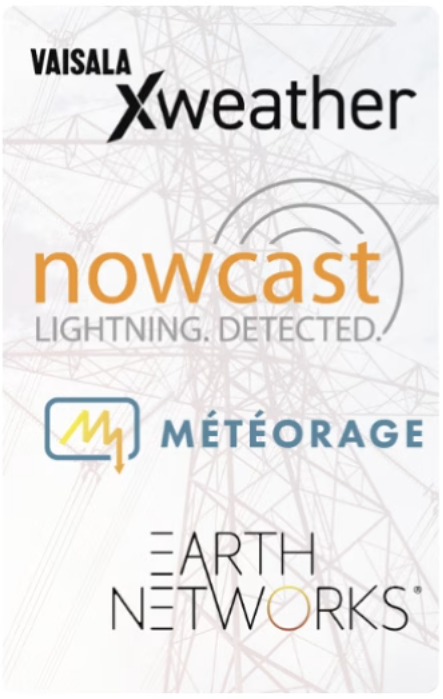
Conclusion
Understanding the fundamentals of lightning is crucial for industries relying on accurate weather and risk assessment data. With modern Lightning Location Systems, decision-makers can move beyond outdated methods like keraunic levels and leverage high-precision lightning data for improved infrastructure protection and risk mitigation.

